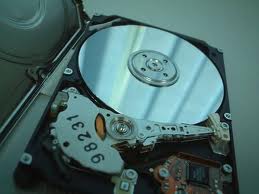This is the top 7 articles for the month of April 2011.
7 – Check your disk usage with df and du
As system administrator , but also as common user on my PC, one of the more common problem is the fill up at 100% of a filesystem.
So, in this article we’ll see 2 commands that can help us in keeping under control or check the space used in every filesystem and in his directory.
df : report file system disk space usage
du: estimate file space usage
6 – Music Production in Linux 1
 I came across by chance in what I consider one of the more comprehensive guide to creating audio in Linux, and Stefano gave me the permission to republish his material that I consider really good and that he uses as musician.
I came across by chance in what I consider one of the more comprehensive guide to creating audio in Linux, and Stefano gave me the permission to republish his material that I consider really good and that he uses as musician.
Stefano it’s an Ubuntu user and his guide it’s based on this distribution, he’s really active in the Ubuntu italian community, if you want to make him a question regarding his guide, you can post in this thread http://forum.ubuntu-it.org/index.php/topic,278719.0.html, the language of the forum is Italian, but i’m sure that you’ll get some answers also if you ask kindly in English.
5 – Tesseract-ocr: convert scanned images into editable documents on Linux
 Tesseract-ocr: how to convert scanned documents into editable text on Ubuntu or Debian, Original article by Gabriele published on Gmstyle (italian blog)
Tesseract-ocr: how to convert scanned documents into editable text on Ubuntu or Debian, Original article by Gabriele published on Gmstyle (italian blog)
I learned from the requests come via email, that some of my readers use Ubuntu (or Linux in general) to work and deal with graphics and publishing, who for his profession and who as a hobby. I draw inspiration from the request of a dear member of this little web space, which has given to me the input for this article, to make a bit of clarity about a subject that,for what I’ve saw around during my research on the Internet, seems to have created some difficulties for many people.
The argument i’m talking about is the OCR technology (Optical Character Recognition), that is a “technology ” that can recognize text characters from an image of paper documents previously digitized through the scanner and then transform this into an editable text
4 Zombies games on Linux
 Everyone loves the invasion of zombies, and everyone loves linux, and so what can be born from the union of these two elements?
Everyone loves the invasion of zombies, and everyone loves linux, and so what can be born from the union of these two elements?
5 great games of course !
The games that i’ll show to you in this article are: Atom zombie smasher, violetland, Ultimate Zombie Fighters, project zomboid and Zombpocalypse, have a good day with them !
3 –QR Code in Linux
Probably you have already saw these small black and white image in some sites or while walking around your city, or if you have a smartphone probably you have already used them; they are QR Code.
From Wikipedia: A QR code (short for Quick Response) is a specific matrix barcode
(or two-dimensional code), readable by dedicated QR barcode readers and camera phones.
The code consists of black modules arranged in a square pattern on a white background.
The information encoded can be text, URL or other data.
In this article we’ll see how to create these image in Linux and some uses of these images.
2 –
Knockd, to secure your ports on Linux
Today, i’ll show you how to use knockd to improve the security of your linux server, the more common use that i’ve saw so far is: “i’d like to connect on port 22 (ssh) but i don’t want to leave to port open for everyone..and i’ve a dynamic IP”. In these cases you can close the ports and use knockd to knock on the ports of your Linux box and let you in.
1 –
10 Easter Eggs in Linux
 Happy easter to all, what’s better than celebrate this holiday taking a look at what have hidden the programmers in our software ?
Happy easter to all, what’s better than celebrate this holiday taking a look at what have hidden the programmers in our software ?
A virtual Easter egg is an intentional hidden message, in-joke or feature in a work such as a computer program, web page, video game, movie, book or crossword. The term was coined—according to Warren Robinett—by Atari after they were pointed to the secret message left by Robinett in the game Adventure.
Popular Posts:
- None Found


